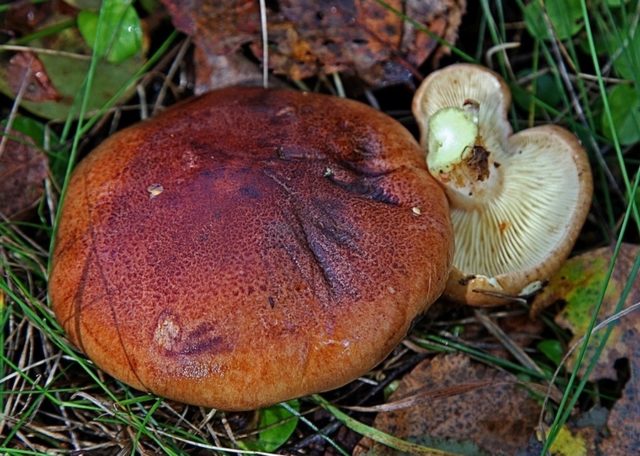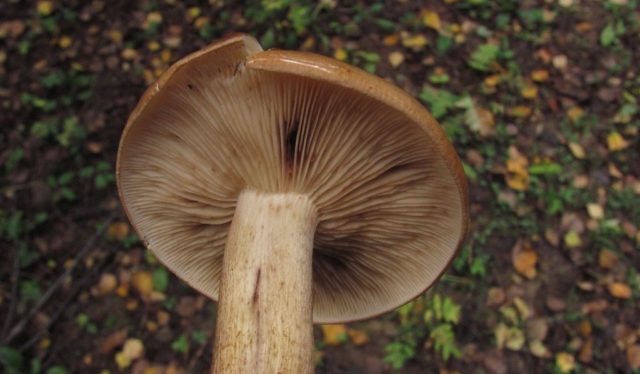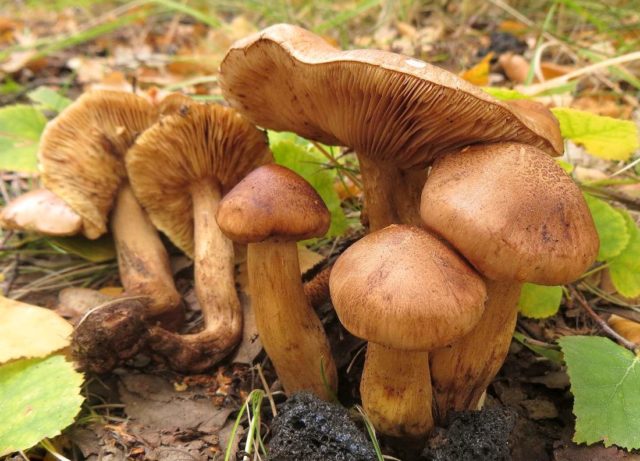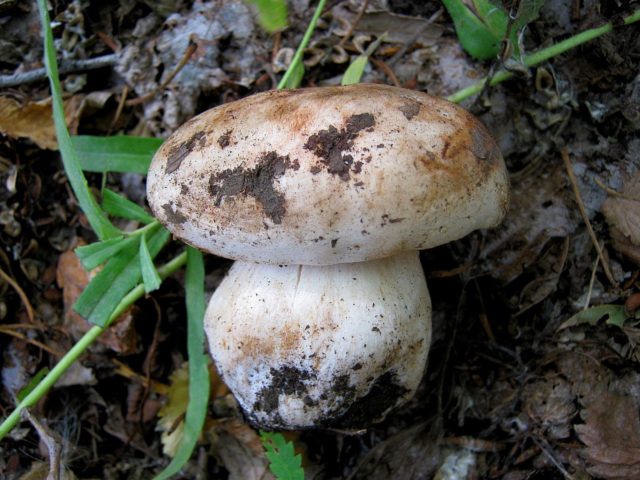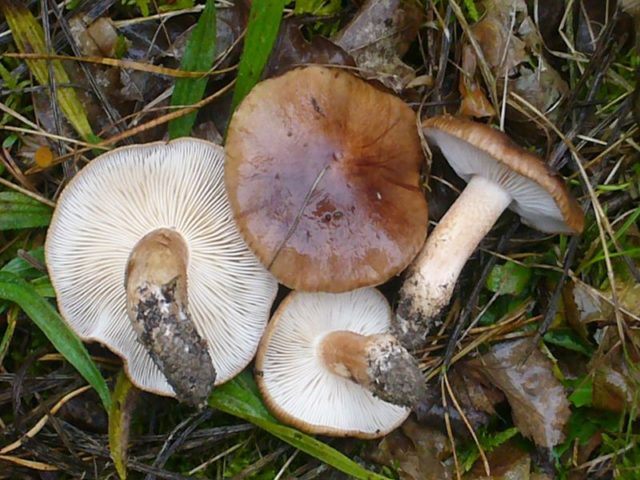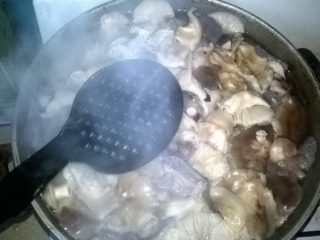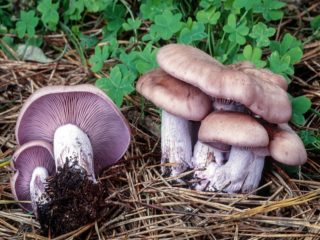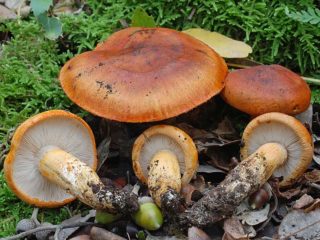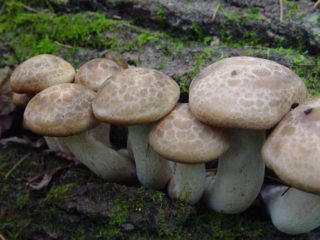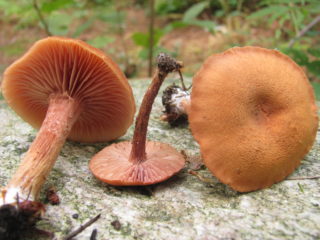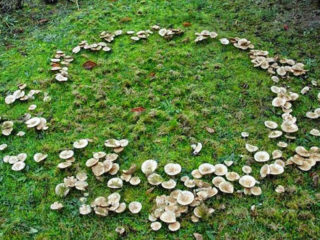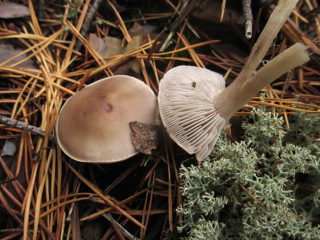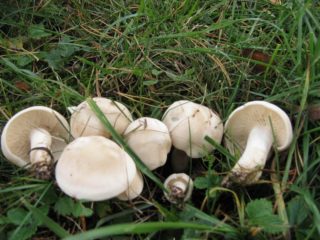Content
Ryadovka red belongs to the genus Ryadovka (Tricholoma) and the largest family of Ryadovka (Tricholomaceae), which contains many species from other genera: talkers, lepists, kalocybe and others. There is debate among mushroom pickers about the taste qualities of these mushrooms, but there is no doubt about the usefulness of edible rows - it has been proven by scientists.
Where do red rows grow?
Red grass (Tricholoma fulvum) has several names:
- yellow-brown;
- brown;
- yellow-brown;
- red-brown;
- Tricholoma flavobrunneum.
It grows in both deciduous and coniferous forests. Depending on the area, it can form mycorrhiza with birch, fir, pine and spruce trees. Rarely found alone, most often in groups, forming a “witch’s circle” or row. It bears fruit annually, but does not spread as actively as other types of rows.
In addition to forests, it can grow on the edges, clearings, along roads, meadows and groves.
The yellow-brown mushroom is common in the northern and temperate zones of Russia, in particular in Siberia, the Urals, the Far East, as well as in the temperate latitudes of Western and Eastern Europe. Fruits from the beginning of August until the first October frosts. The photos and descriptions presented below will help you correctly identify red row mushrooms.
What red rows look like
The cap of the yellow-brown row is initially cone-shaped, the edges are turned down. As it matures, it becomes convex, then wide and prostrate with a tubercle in the center and wavy edges. Reaches 15 cm in diameter. The color corresponds to the name, browner in the center, yellowish at the edges. In cloudy weather the cap is smooth and shiny, in dry weather it is sticky, scaly or fibrous.
The pulp is not loose, yellow or white, the aroma of mushrooms is weakly expressed, more reminiscent of flour or sourish-putrefactive. The color does not change when cut.
The plates are wide, in young specimens they have a rich yellowish tint; with age they become brownish-red or reddish.
The leg is smooth, thickened towards the base, cylindrical, the same shade as the cap. Reaches a height of 13-15 cm and a thickness of 3 cm. Fibrous, dense, sticky in wet weather.
Is it possible to eat red pine trees?
Red pine row belongs to the conditionally edible mushrooms of the fourth category.For some mushroom pickers it is tasty, but for others it is not edible at all due to its strong bitterness. If you follow the rules of collection and preparation, you can get a tasty and healthy addition to your dishes.
Yellow-brown rows are used for first and second courses, appetizers, salads and fillings. They are boiled, fried, stewed, pickled and salted. When heat treated, the rows become gray and acquire a rich aroma and taste. Goes great with vegetables and meat, especially fried onions or potatoes. In salads and fillings they are used in combination with rice, eggs, garlic, and sweet pepper.
This type of mushroom is suitable for vegetarian and dietary nutrition - the chemical composition is close to meat, but with low calorie content. The mushroom flavor is not overwhelmed by spices.
Taste qualities of the red row mushroom
If red mushrooms are cooked correctly, they have a pleasant taste. They are not consumed raw.
Benefits and harm to the body
Red rower, like all its edible counterparts, is considered a valuable mushroom:
- antibacterial drugs against tuberculosis are produced from its enzymes;
- contains many microelements and vitamins C, B, A and PP;
- helps with stress and fatigue;
- contains few calories, suitable for diet menus;
- has antibacterial, immunomodulatory, antioxidant, anti-inflammatory and antiviral properties;
- cleanses the body of toxins, normalizes the tone of the intestines and stomach, promotes the restoration of liver cells;
- useful for people suffering from rheumatism, diabetes, nervous disorders, oncology, osteoporosis, diseases of the cardiovascular and genitourinary systems.
Yellow-brown reacts to all environmental pollution, so old specimens should not be collected, especially if they grow near a plant or highway. Such mushrooms will not bring any benefits.
False doubles
Red rower can be confused with poplar, which grows in groups near poplars or aspens. This type of lookalikes is classified as conditionally edible.
The mushroom is also similar to the white-brown row, growing in pine forests next to coniferous trees. It is difficult to detect because the fungus hides in fallen leaves or pine needles. The white-brown double is conditionally edible and grows in groups.
Collection rules
Young yellow-brown varieties do not have a bitter taste; in mature specimens it is pronounced. The younger the mushroom, the less bitterness it contains. Collection should take place in the forest, away from busy places and industrial areas.
How to cook red rows
Before cooking, the redhead is cleaned of dirt, the skin is removed from the cap, then they are washed and boiled in water with the addition of 2 tbsp. l. salt and spoons of vinegar 9% (or 1 onion) for at least 30 minutes, drain the broth. This will relieve the mushrooms of bitterness.
Some mushroom pickers soak the crop for 4-5 hours before the first cooking to remove bitterness and dirt. To get rid of liquid, fry the rows for 10 minutes, stirring regularly.
Conclusion
Red rower will not harm healthy people, but it should not be used by those who have problems with the gastrointestinal tract or liver, if the gallbladder has been removed or cholecystitis has been diagnosed.
If vomiting, nausea, diarrhea, abdominal pain and other symptoms of poisoning appear 1-2 hours after eating the rows, you must call an ambulance.
